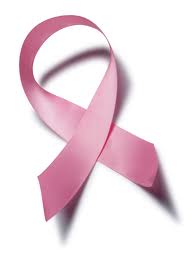Sources: National Cancer Institute; Journal of Clinical Oncology; Lancet
 NEOADJUVANT therapy is treatment given before primary therapy. For example, a woman may receive neoadjuvant chemotherapy for breast cancer to shrink a tumor that is inoperable or a woman whose breast tumor can be removed by mastectomy may receive neoadjuvant therapy to shrink the tumor enough to allow breast-conserving surgery.
NEOADJUVANT therapy is treatment given before primary therapy. For example, a woman may receive neoadjuvant chemotherapy for breast cancer to shrink a tumor that is inoperable or a woman whose breast tumor can be removed by mastectomy may receive neoadjuvant therapy to shrink the tumor enough to allow breast-conserving surgery.
Adjuvant therapy, or additional treatment (ie. chemotherapy, radition) has long been advocated for women with breast cancer. This takes place after the primary treatment, be it surgical, chemical or radiological. Neoadjuvant chemotherapy is given in the same manner as adjuvant chemotherapy. If a tumor does not respond (shrink) or continues to grow or even spread (metastasize) during neoadjuvant chemotherapy, the doctor may stop treatment and try another type of chemotherapy or perform surgery instead, depending on the stage of the cancer.
Clinical trials are examining whether hormonal thereapies or traditional chemotherapy agents, such as Tamoxifen, are benefecial to women diagnosed with breast cancer and even to women -very young women (under age 40) in particular, who have not yet been diagnosed with breast cancer but have a strong family history or genes of significance. “It is extremely encouraging to know there is a very simple technique that can make a really big difference in terms of coming out the other end with no disease,” said Lori Redmer, former executive director of the Triple Negative Breast Cancer Foundation.
The majority of breast cancers are driven by one of three causes – the hormone estrogen, another hormone called progesterone, or a gene called human epidermal growth factor receptor 2 (HER2). Triple negative isn’t caused by any of these – and it isn’t helped by the many targeted drug treatments that have been developed to fight the other three causes. Triple-negative cancer is more likely to strike young women, they aren’t checking for cancer the way older women are, they aren’t getting regular mammograms, and they often don’t find the tumors until they are large and have spread.
Breast cancer is the second-leading cancer killer of women, after lung cancer. The American Cancer Society projects that 226,870 women will be diagnosed with breast cancer this year and that 39,510 will die of it. In the United States, 93 percent of women with Stage 1 breast cancer survive for at least five years, but this falls to 15 percent for women with stage 4 – the type that has metastasized (spread).
The Lewis Law Firm has a history of representing women who are diagnosed late with breast cancer. If you are in Philadelphia or New Jersey and you or a loved one have been diagnosed with breast cancer contact the Lewis Law firm today for a FREE consultation.
